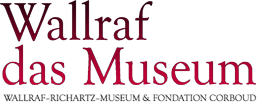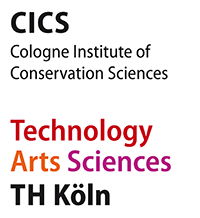Methods & Goals
The examination of all the paintings was carried out in the Department of Art Technology and Conservation at the Wallraf-Richartz-Museum & Fondation Corboud in Cologne.
The goal of the examinations was to describe, as comprehensively as possible, the painting materials and techniques used, along with the state of preservation of each individual painting, and to create a detailed written and photographic documentation of the results. A flanking evaluation of relevant written and pictorial sources (e.g. catalogues raisonnés, historical photographs, art-historical and art-technological literature etc.) on the individual artists and their work makes it possible to place the findings in the context of the current state of research. To assist the practical implementation of the technological examinations, a procedural schema and a detailed questionnaire were drawn up, to provide the investigators with some orientation and to ensure the greatest-possible comparability of the results. The examinations were performed under incident, raking, transmitted and reflected light, with a stereo-microscope and also in the ultraviolet and infrared regions of the spectrum. Where the investigation required it, false-colour infrared reflectography and X-ray examination were employed.
The emphasis was on non-destructive examination to preserve and protect the original substance of the paintings. In order to determine what pigments were used, therefore, the non-destructive method known as VIS spectroscopy was used. Although not every pigment can be identified beyond doubt by this technique, the results nonetheless provide a helpful overview, which can be used to supplement the already well-documented research on the pigments of the Impressionists (»article on Vis spectroscopy by Dr Oltrogge). Invasive material analysis was largely avoided. Only a few paintings raised particular questions that could only be answered by the taking and subsequent analysis of samples. In these cases, cross-sections were prepared and microscopically assessed, or else sample material was analysed with the help of FTIR spectroscopy, SEM, EDX and/or microchemical procedures. We made a further exception were the picture support was wood: these were all subjected to wood identification techniques, as the current state of research in respect of the wooden picture-supports of the Impressionists, and in particular the Neo-impressionists, still has glaring omissions.
For the online presentation the examinations have been abridged to the essential facts. The detailed documentation can be inspected on application to the Abteilung für Kunsttechnologie und Restaurierung (Department of Art Technology and Conservation) at the Wallraf-Richartz-Museum & Fondation Corboud.

A stereo-microscope is one of the most important aids for the investigation of paintings. With a magnification of up to 80x and a three-dimensional view, painting techniques and states of preservation can be examined and assessed.

An investigation technique in which infrared rays penetrate the paint layer and can reveal, in particular, hidden underdrawings on a pale ground; the infrared reflectogram is the visible result of infrared reflectography.

An x-ray examination of a painting, i.e. in practice a photograph taken with x-rays rather than visible light, can be useful because certain pigments (above all lead white) are highly opaque to x-rays; this can provide information about layering, overpainting and past conservation measures.

Fluorescence is an optical phenomenon, applied in the examination of paintings, which is generally caused by the stimulation of short-wave ultraviolet rays and primarily provides information regarding varnishes, retouching and overpainting.


